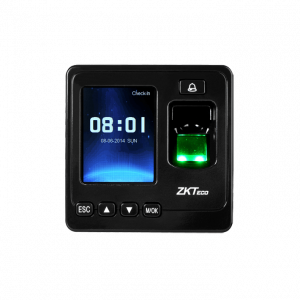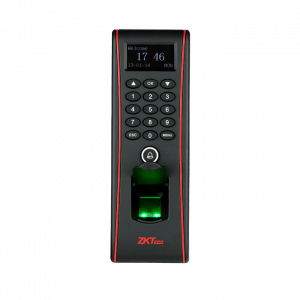
Access control card readers AND 6 Access smart cards for your business
Access control card readers AND Access smart cards for your business
Controlling who has access to a company’s premises and assets is one of the most basic security requirements for every company. Card readers are one of the most often used methods of access control. New, lower-cost access control solutions are increasingly the preferred choice for organizations of all sizes, which were previously only within reach of corporate security budgets.
There are, however, a range of card reader systems on the market. This makes determining the solution that best meets your company’s requirements difficult. Here, we’ll look at your access control card reader alternatives and show you how to make the best purchase selection for your needs.
What Are the Benefits of Using Card Readers for Access Control?
Using real security personnel for entry control is often only cost-effective for short-term events with a temporary perimeter, such as special events. Putting a human security officer at every access point is frequently prohibitively expensive in more stable company environments, and it would be more likely to generate errors.
A security officer will make a mistake at some point. Someone will be waved through by mistake, or a keychain will go missing. And if the lost key is a master or sub-master, the rekeying fees incurred as a result of that one simple error will rapidly add up.
Using card readers to verify employees has various advantages over human staffing and manual access control as they Include:
- Control Automated: Electronic card readers are indestructible. They never give out erroneous access credentials, lose a key, or fall victim to social engineering attempts, unlike human security employees.
- Collecting Data: Card readers that capture access data might indicate patterns or abnormalities. Is there a reason, for example, why one of your front office employees signs in and out of your warehouse five minutes before the end of their shift every few days? Do the sign-ins correspond to the dates of your inventory shrinkage?
Access control logs are also useful for many types of reporting. These records can be used to show that you are in compliance with the law. If a theft occurs on-site, they can also give vital forensic data.
- Remote Management: Many systems may be handled remotely through secure network connections because access control card readers are electronic and linked to a central database. This is especially beneficial if you have many worksites to oversee or if you have security managers that operate remotely.
- Configurability and dependability: Provisioning a new access card is fairly inexpensive. It would only cover the cost of the new card and the few minutes of effort required to grant access to the user. Tasks involving a large number of access cards, such as altering access for a whole building or team, are much more efficient. Changing card access rights is a bargain when compared to the expense of cutting hundreds of new keys or rekeying a whole facility.
- Other Security Systems Integration: Many of the most popular access card systems are built to work with other security and management systems. Instead of managing various user databases and administrative interfaces, integrating systems allows you to run everything on a single management platform.
What to Look for When Purchasing an Access Control Card Reader
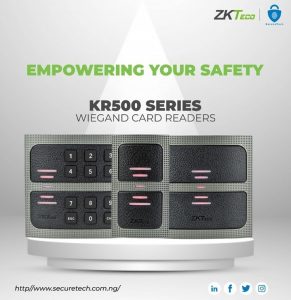
Currently, a number of different access card technologies are available. We’ll go through the top choices here, starting with the most basic, lower-security card kinds and working our way up to more complicated solutions that are better suited for more complex or higher-security settings.
- Cards with barcodes and QR codes: Barcodes and QR code cards have a lot in common. Access control points scan both types of cards with an infrared beam of light. The code is translated into user access credentials by the associated computer system, which subsequently authenticates the user. The main difference between these two sorts of cards is the amount of data they can store. A hundred characters of data may be stored in a barcode. Several thousand characters may be stored in a QR code.
- Code cards are cheap, but they have a low level of protection. A smartphone camera or photocopier can simply copy the codes. If an access reader is left unattended, a thief might acquire access by simply waving a cloned barcode in front of it. As a result, these cards are only suitable for low-risk access control.
- Magstripes Cards: Swipe cards are another name for them. The same method is used in traditional credit cards, with credentials stored on a magnetic strip put into a plastic card.d. Magstripe cards are slightly more secure than barcodes, but only marginally. Magstripe duplicators and writers may be found easily on the internet. They provide anybody, even criminals, the ability to copy or replace any card they get.
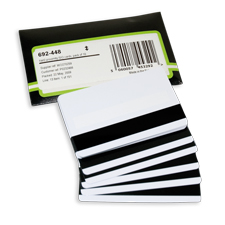
Magstripe cards are best for low-risk access control if card loss or theft isn’t an immediate threat to the resource you’re guarding.
- Wiegand Cards: A magnetic pattern is stored as a unique credential number onto a metal wire inserted within a card. Wiegand cards originally gained popularity in the 1980s as a more secure alternative to the existing barcode and magstripe cards. Because the unique credential codes are encoded during the manufacturing process, cards cannot be reprogrammed or readily wiped. In medium-security situations, Wiegand cards are still widely utilized. However, newer wireless technology, such as RFID, has rendered its security advantage outdated.
RFID Cards (Radio Frequency Identification):
Although RFID computer chips are tiny enough to fit on an access card, they can hold up to 32 kilobytes of data, which is roughly equivalent to 32 QR codes. RFID chips can also be encrypted, making them extremely difficult to replicate or counterfeit. RFID cards are also more customizable than previous options since data may be updated or deleted by authorized security professionals.
RFID access cards use a short-range wireless signal to send their credentials. These cards are more hygienic and less prone to wear than their counterparts since they are non-contact.
Currently, two types of RFID cards dominate the market, each with its own set of benefits:
- Prox Cards with RFID: Prox cards provide credentials from a card to a reader in a one-way transaction. Because they communicate data wirelessly, they simply need to be close to a reader, earning them the moniker prox card.
Low-cost prox card access control solutions are available from both AMAG and Lenel. The prox cards supplied by both vendors are easily integrated with Real-Time Networks systems.
- RFID Smart Cards: RFID are meant to enable access control that is both safe and quick. They are essentially small single-purpose computers since they include built-in CPUs.
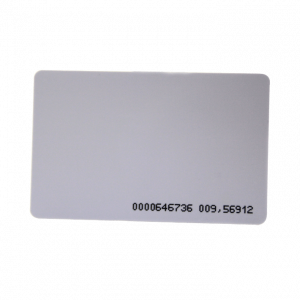
Smart cards, unlike prox cards, can communicate back and forth with card readers, allowing for far more sophisticated encryption. When an RFID smart card is read at an access control point, it generates a one-time encrypted code that authenticates the user. Because the algorithm will not work for attackers, they will not be able to simply replicate and send the same encrypted signal.
Smart cards are extremely difficult to copy, making them ideal for high-security settings.
- Alternative Solutions: Although these systems do not employ cards, they are frequently seen as an alternative to card-based access control.
- Biometrics: Biometric access control readers scan and compare a user’s unique physical characteristic to a recorded device to authenticate them. Fingerprints and eye irises are two typical biometric authentication elements. Biometric readers are dependable and secure, but they are more expensive.
- PIN CODES: In low-security environments, PIN code keypads can provide the necessary amount of access control. Anyone who knows a code has access, but there is no means to authenticate an individual’s identity.
Smartphones: Smartphones with secure authentication software are increasingly being utilized for access control now that they are ubiquitous. This transforms a smartphone into a digital keychain.
How can organizations pick the correct access control system for their requirements when there are so many alternatives on the market?
- Making a Well-Informed Purchase: To compare different access control card readers, you’ll need a solid structure. Choosing the correct card type for your company entails determining which technology best meets a variety of requirements. Those criteria will be yours in most cases.
Ideally, there should be a balance between security and cost.
- Desired Security and Cost Balance: The means for thieves to exploit access card technology are more easily available for less-priced systems, as we’ve discussed. Those less secure access control solutions are sufficient in some low-risk situations. If your risk of access breaches is high, or the potential harm of a breach is great, more stringent, but more expensive methods, such as RFID smart cards, should be considered.
- Future Business Prospects: If you know your company model will change in the next years due to expansion, downsizing, or other factors, it could be worth investing in a more adaptable access control system now. Will your business, for example, create a research and development department to store prototypes and trade secrets?
- Infrastructure that already exists: you can simply replace old cards location by location or through attrition with newer smart cards as personnel turnover, moving to the new system will be easier.
If you’re already using RFID tags for another system, such as tracking employee safety, you may be able to make use of that infrastructure and combine a suitable RFID access control system with it.
-
Regulatory Requirements: Specific forms of access control are required by some regulatory standards. Simpler methods, such as PIN codes or barcode cards, may not provide enough security or identity verification to meet those requirements. Compliance may necessitate more stringent authentication methods such as proxies or smart cards.
To discover more about our Access control readers and access smart cards Contact SecureTech Nigeria.
